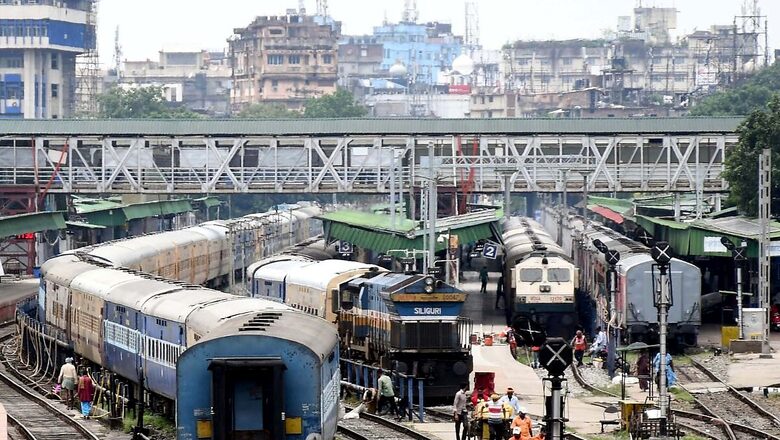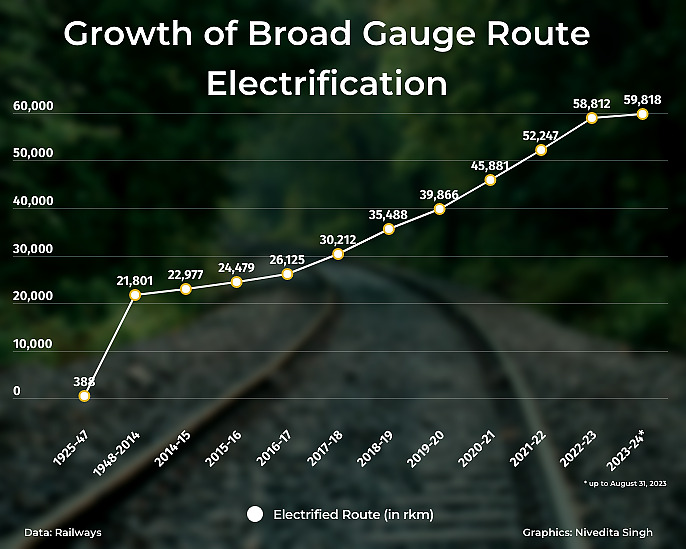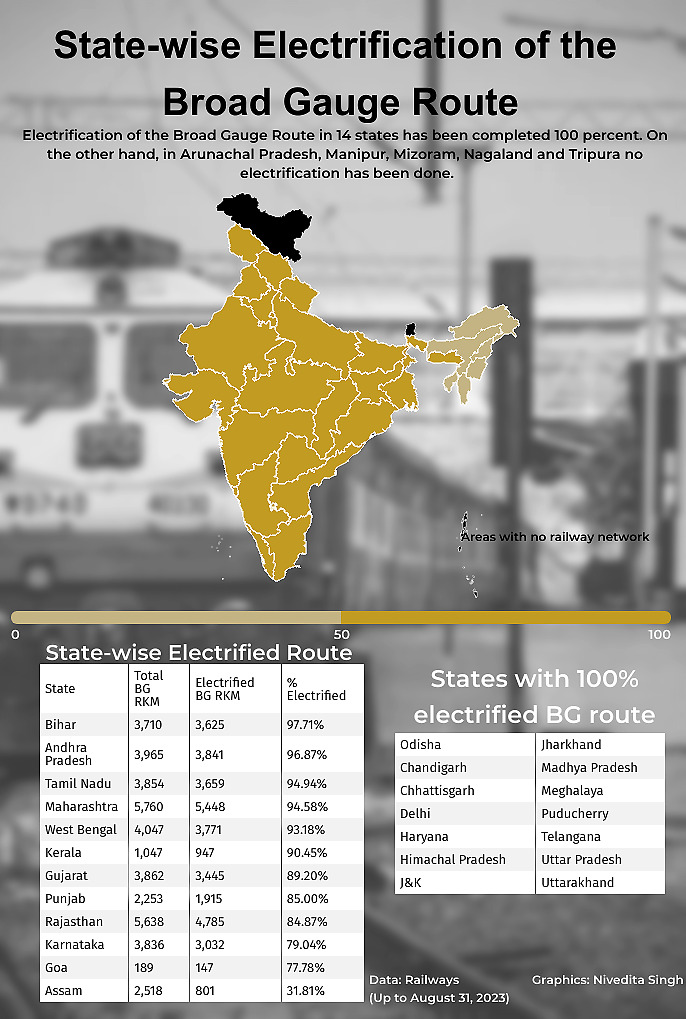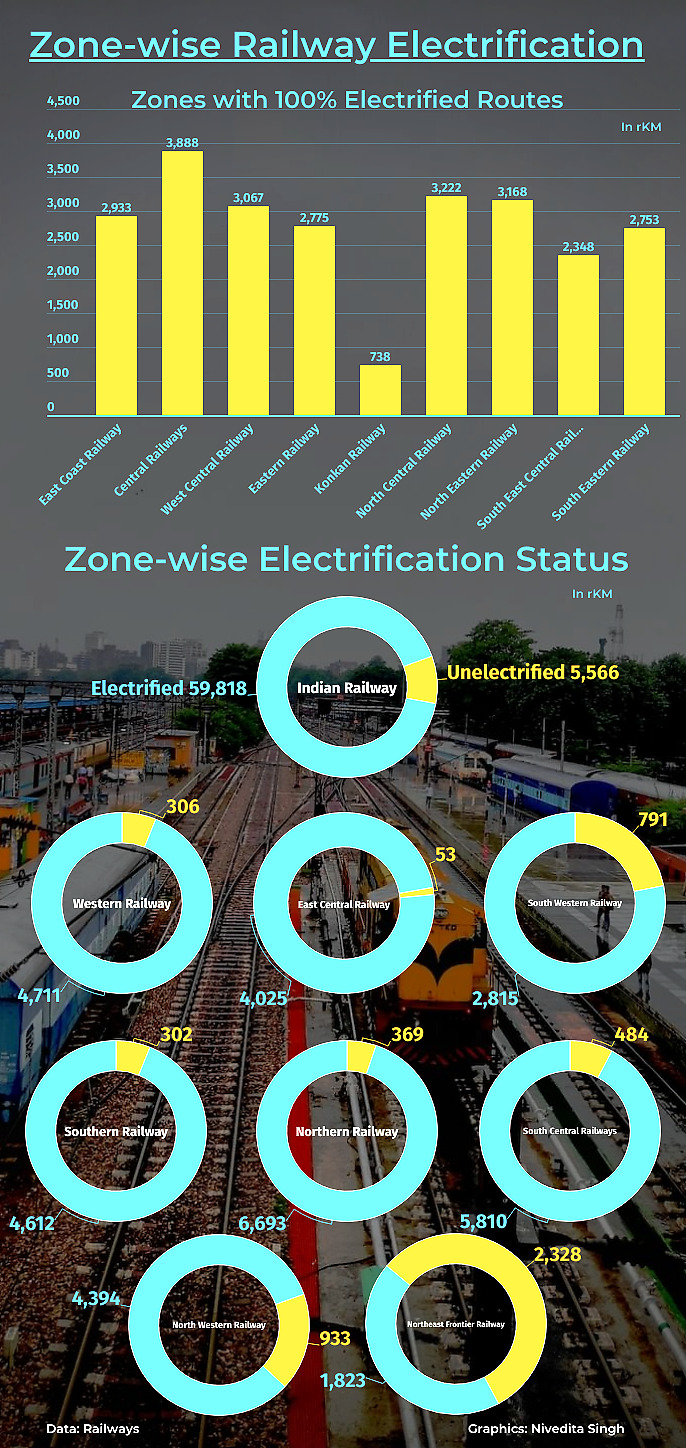
views
Of the total 65,141 route kilometres of the Broad Gauge network of the Indian Railways, 59,818 km (about 92 per cent) has been electrified as of September 1 and work is ongoing on around another 5,500 route kilometres.
As per the documents seen by News18, the ministry aimed to electrify nearly 24 route kilometres per day during this financial year. So, by August-end, it should have electrified around 3,650 kms. However, it has managed to electrify just 1,006 route kms — a little over 6.5 route kilometres per day.

The history of electrification on railway routes started in 1925 with 1,500 Volts DC and subsequently, extended by installing a 3,000 Volts DC system. At least 388 route km was electrified by 1936. Further, in 1957, the ministry decided to adopt a 25 KV AC traction system and, thus, selected main lines and high-density routes were taken up for energisation in a planned manner.
It was the Central Zone where the first electric train ran in India. The train was between the then Bombay Victoria Terminus (now Chhatrapati Shivaji Maharaj Terminus) and Kurla on Harbour line. It was flagged off on February 3, 1925.
Slow Pace of Electrification This Year
Since 2020-21, Railways have been electrifying more than 6,000 route km each year. In 2020-21, the ministry electrified 6,015 rkm — 16.5 rkm/day. The next year, the work was completed on 6,366 rkm — 17.5 rkm/day and in 2022-23, electrification was done on 6,565 rkm — around 18 rkm/day.
However, this financial year, the pace of electrification has been low and per day length has not touched double digits. In the first two months, only 220 rkm was electrified. In June, just 64 rkm was electrified. July was little better with work completed on 428 rkm. In August, less than 300 rkm was electrified, the ministry data shows. In total, just 1,006 km has been electrified.
Speaking to News18, a ministry official said getting statutory clearances for the execution of electrification works is a little complex and takes time.
“To overcome these issues, the ministry has formed a project monitoring group portal. This helps in resolving the constraint being faced during commissioning of the work. Also, the Gati Shakti Directorate is helping in smooth and speedy approval of projects at the Railway Board level,” the official said, seeking anonymity.
They also assured that the ministry is confident of completing electrification by the year-end.
Electrification Completed in 14 States
As of date, 14 states have 100 per cent electrified BG routes. These are Odisha, Chandigarh, Chhattisgarh, Delhi, Haryana, Himachal Pradesh, J&K, Jharkhand, Madhya Pradesh, Meghalaya, Puducherry, Telangana, Uttar Pradesh and Uttarakhand.

Arunachal Pradesh, Manipur, Mizoram, Nagaland and Tripura are on the other end of the spectrum with no electrified routes at all.
Further, at least six states — Bihar, Andhra Pradesh, Tamil Nadu, Maharashtra, West Bengal and Kerala — are inching towards 100 per cent electrification as they have more than 90 per cent routes electrified.
Gujarat, Punjab and Rajasthan have more than 80 per cent electrified routes while Karnataka and Goa have more than 75 per cent electrified routes.

In terms of zones, 10 out of 18 zones have achieved 100 per cent electrification and another five have over 90 per cent electrification.
Only the Northeast Frontier Railway, which covers the northeast states, has less than 50 per cent electrification.
The East Coast, Central, West Central, Eastern, Konkan, North Central, North Eastern, South East Central and South Eastern Railways have achieved 100 per cent electrification. East Central, Northern, Western, Southern and South Central Railways have more than 90 per cent electrified routes.
Two zones — North Western (82 per cent) and South Western (78 per cent) Railways — have more than 75 per cent electrified routes.
The Indian Railways is aiming to become the largest green railway network in the world by chasing the target of becoming Net Zero Carbon Emitter by 2030.



















Comments
0 comment